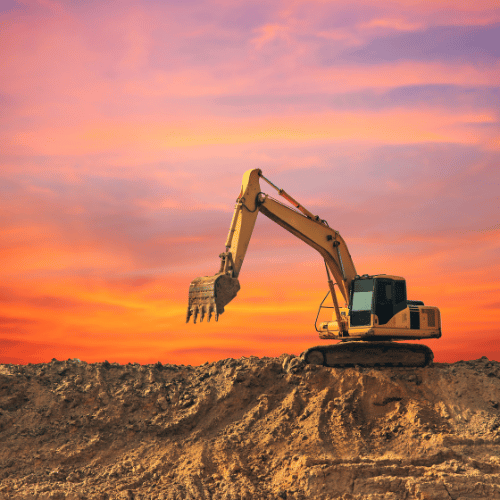Why an expert excavation partner keeps megaprojects on schedule
Fast-growing distribution hubs, mixed-use campuses, and industrial parks succeed only when the earthwork phase finishes on time. Late soil remediation or inaccurate grading ripples through every trade, raising total project cost by up to 10 percent. A 2024 Dodge Data & Analytics survey found that projects engaging a specialist excavation contractor during pre-construction trimmed rework by 15 percent and saved an average of $1,500,000 in downstream change orders. Early collaboration delivers:
- Reliable cut-fill calculations that match actual field conditions
- Streamlined permitting because geotechnical risks are documented up front
- Sequenced hauling routes that limit truck cycles and neighborhood disruption
Key factors that determine excavation success
Soil analysis and stabilization
Michigan’s glacial soils range from loose till to heavy clays. Comprehensive borings, paired with laboratory proctor tests, quantify bearing capacity so crews can decide whether to re-use onsite material or import structural fill. GPS-guided rollers then compact to 95 percent modified Proctor density, reducing post-build settlement to less than ½ inch.
Water management
High water tables threaten open excavations. By specifying well-point dewatering and perimeter swales, an experienced contractor prevents the 12 percent productivity loss that the Association of General Contractors attributes to unplanned pumping operations.
Precision grading
Machine-controlled dozers connected to 3D site models achieve ±0.03-foot accuracy. That level surface shortens concrete placement by two days on a typical 500,000-square-foot slab, according to Trimble Earthworks field data.
Safety culture
Excavation accounts for one in five OSHA trenching fatalities nationwide. Verdeterre’s zero-incident record stems from daily competent-person inspections, sloping or shoring every trench deeper than 5 feet, and equipping crews with digital hazard-reporting apps.
Cost efficiencies unlocked by technology-driven crews
Modern fleets slash both carbon and capital outlay:
- Tier 4-Final engines and idle-reduction automation cut diesel use by 18 percent.
- Real-time telematics reveal under-utilised machines, allowing reallocation instead of costly rentals.
- Drone-based progress mapping validates pay quantities within four hours, legacy surveying took three days, freeing billing and lender inspections to move forward sooner.
These savings compound across a two-year build. On a recent 200-acre logistics park, smart dispatching reduced haul truck mileage by 48,000 miles, eliminating 148 tons of CO₂ and returning $420,000 to the owner’s contingency.
As your development scales, so do the stakes. Mid-project equipment bottlenecks or weather delays can erase slim profit margins; disciplined, data-rich excavation keeps momentum steady.
Implementation checklist
- Verify the geotechnical report and align on the soil remediation plan.
- Upload a 3D model to the machine-control fleet and validate grade breaks.
- Establish dewatering, erosion, and traffic-control zones before clearing begins.
- Schedule drone topo flights at milestones to confirm quantities.
- Hold weekly coordination huddle to adjust logistics, safety, and weather contingencies.
Position your next megaproject for success by partnering with Verdeterre’s commercial excavation team and secure a rock-solid start from day one.


